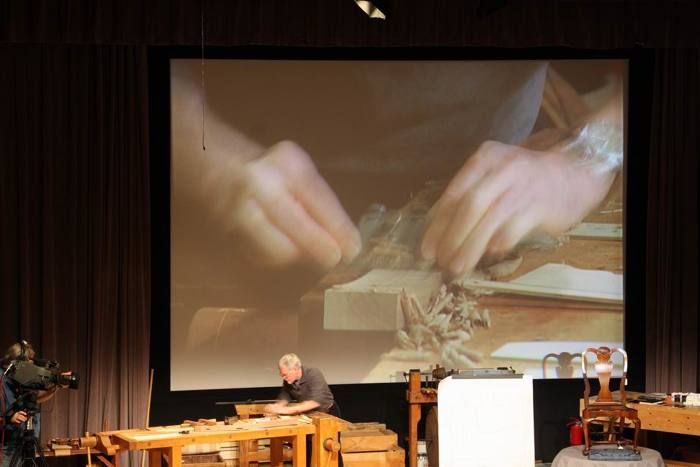
Phil Lowe's sharp spokeshave was a blur as he turned a rough-sawn back post into a perfectly fair, sinuous surface, ready for finish, in about 60 seconds.
On Day 3 of “Working Wood in the 18th Century,” the annual conference the FWW co-sponsors at Colonial Williamsburg, Phil Lowe took the stage, and stole the spotlight.
I’ve watched him work before, but it has been a while, and I had forgotten just how brilliant he is. If you watched closely, and we all did, there were priceless tips to be had with almost every move he made. I remembered how he always places the knife in or on his mark first, before sliding the square up to the knife and marking a line. I always forget that, and slide the square to the mark first, guessing at where my line will actually end up.
But what was really amazing was his surehanded aggressiveness and speed. In far less time than it would take to set up power tools, he flew through the angled joinery in the crest rail and back splat of his Queen Anne chair–even if the cuts had been possible with power tools (many aren’t when it somes to angled joinery on curved pieces).
Tune in next week for Session 2. FWW‘s Matt Kenney will be there, giving his own highlights from the show. And mark the next conference on your calendars, in January 2012. I’ll see you there.


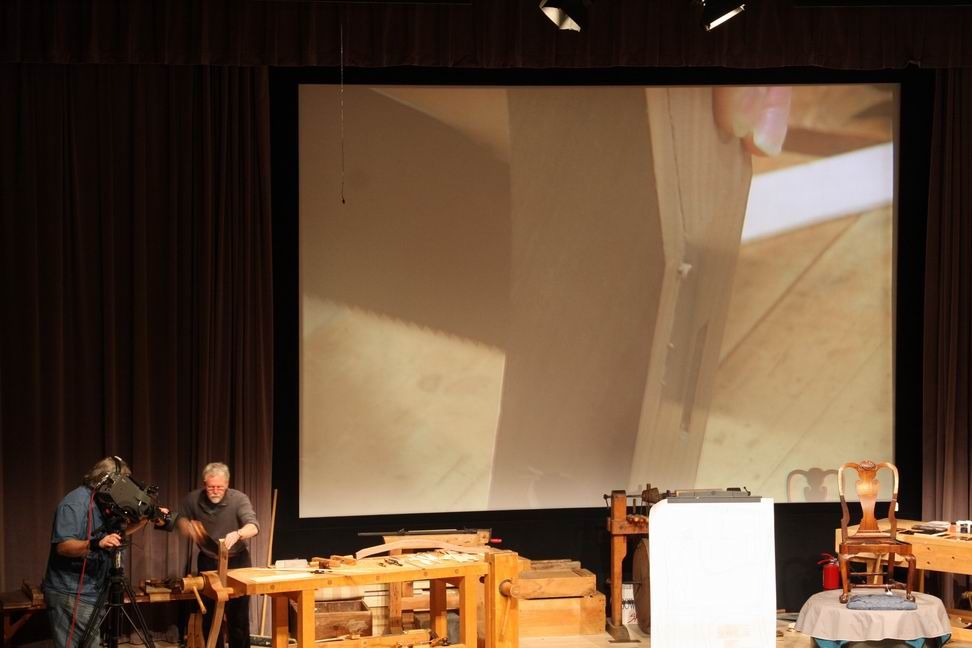
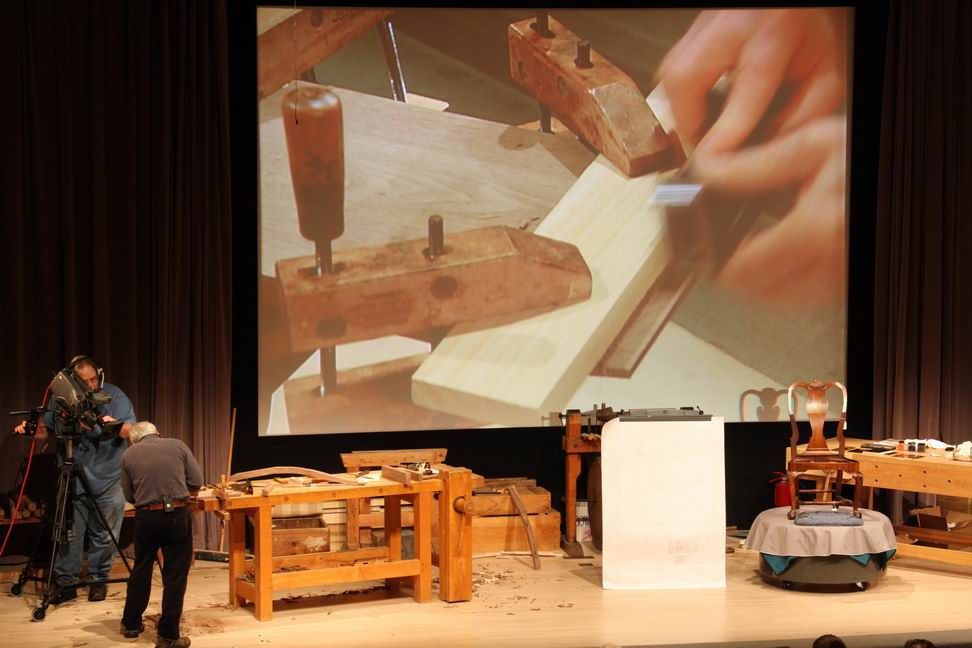
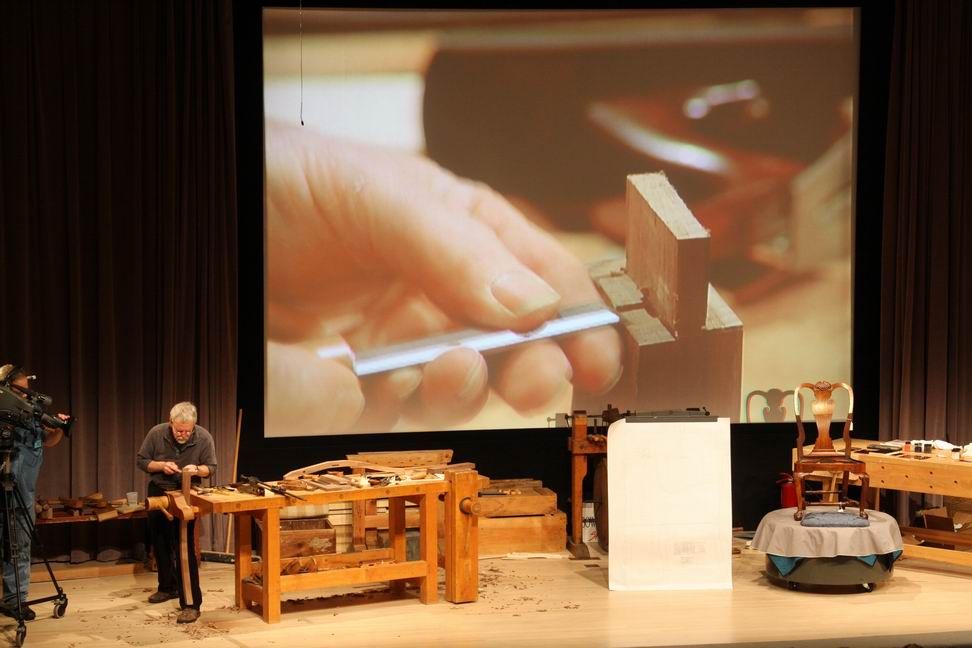
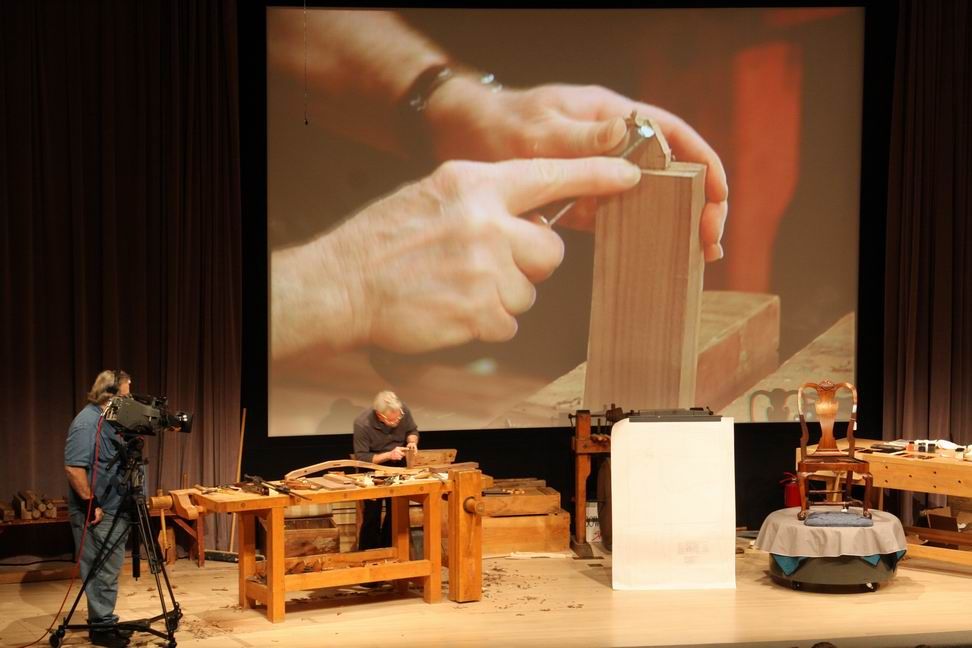






















Comments
Too bad these demonstrations can't be made available for sale following the conference.
Ninja; Excellent description! I loved his mnemonics he was throwing in between the chips flying everywhere, too. "Shoveling" is how you remove material with the chisel, and imagining the workpiece as a "stack of straws" to help figure out which way to shave (i.e. downhill). Obviously a seasoned instructor.
Also, he said he'd use the band saw to rough out the shape on his splat before finishing it with cutting tools. But, watching him do it by hand, I wonder if that would be faster...I'd like to see a "bakeoff" of him doing these two techniques, 'cause I just can't imagine the bandsaw being FASTER than what I saw on stage.
Log in or create an account to post a comment.
Sign up Log in